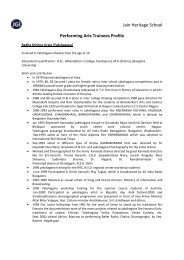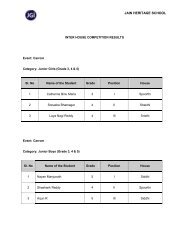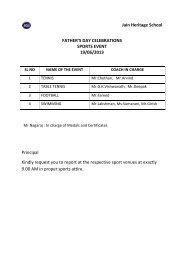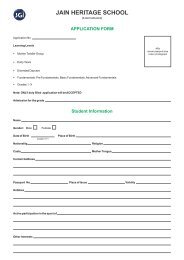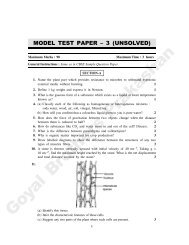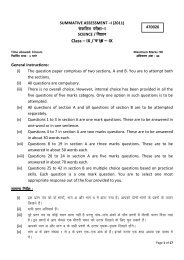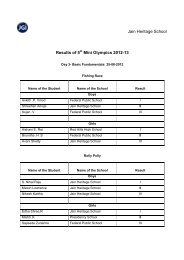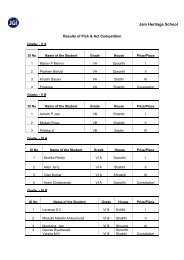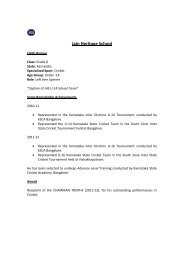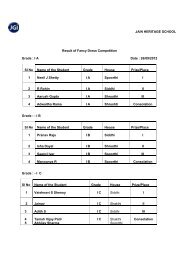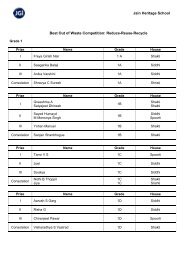Secondary School Curriculum 2012 - Central Board of Secondary ...
Secondary School Curriculum 2012 - Central Board of Secondary ...
Secondary School Curriculum 2012 - Central Board of Secondary ...
You also want an ePaper? Increase the reach of your titles
YUMPU automatically turns print PDFs into web optimized ePapers that Google loves.
2. ENGLISH-COMMUNICATIVE<br />
CODE NO. 101<br />
This is a two-year syllabus for classes IX and X. The CBSE has prepared a package for this syllabus called<br />
Interact in English. It includes the following:<br />
For Students<br />
1 Main Course Book<br />
2 Literature Reader<br />
3 Work Book<br />
Interact in English has been designed to develop the student's communicative competence in English. Therefore,<br />
content selection is determined by the student's present and future academic, social and pr<strong>of</strong>essional needs.<br />
The overall aims <strong>of</strong> the course are:<br />
(a)<br />
(b)<br />
(c)<br />
(d)<br />
(e)<br />
to enable the learner to communicate effectively and appropriately in real-life situations.<br />
to use English effectively for study purposes across the curriculum.<br />
to develop and integrate the use <strong>of</strong> the four language skills, i.e. listening, speaking, reading and writing.<br />
to develop interest in and appreciation <strong>of</strong> literature.<br />
to revise and reinforce structures already learnt.<br />
Teachers may kindly keep the following in mind to develop these competencies:<br />
Creativity : Students should be encouraged to think on their own and express their ideas using their<br />
experience, knowledge and imagination, rather than being text or teacher dependent.<br />
Self-monitoring : Students should be encouraged to monitor their progress, space out their learning, so students<br />
should be encouraged to see language not just as a functional tool, but as an important part <strong>of</strong><br />
personal development and inculcation <strong>of</strong> values.<br />
Teaching/Testing Objectives READING<br />
By the end <strong>of</strong> the course, students should be able to:<br />
1 read silently at varying speeds depending on the purpose <strong>of</strong> reading;*<br />
2 adopt different strategies for different types <strong>of</strong> text, both literary and non-literary;<br />
3 recognise the organization <strong>of</strong> a text;<br />
4 identify the main points <strong>of</strong> a text;<br />
5 understand relations between different parts <strong>of</strong> a text through lexical and grammatical cohesion devices.<br />
6 anticipate and predict what will come next in a text;*<br />
7 deduce the meaning <strong>of</strong> unfamiliar lexical items in a given context;<br />
* Objectives which will not be tested in a formal examination<br />
59



